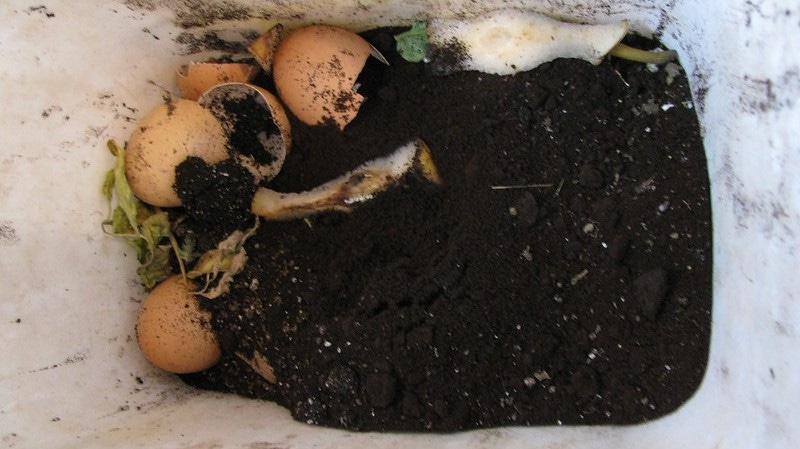
The most consumed drink in the world has more benefits than just keeping us awake. Spent coffee grounds can be used as a soil amendment and compost ingredient, while liquid coffee acts as an effective slug killer.
According to various sources, between 400 billion to 1 trillion cups of coffee are consumed around the world every year. No matter the number, that’s a lot of coffee, which means a lot of spent coffee grounds. Using coffee grounds in the garden keeps them out of the waste stream and gives gardeners another option for caring for plants and dealing with slugs.
Linda Brewer, Oregon State University Extension Service soil scientist, said coffee grounds can be worked into the soil or added to a compost pile but should be done with some restraint.
“The big message is that generally people are too enthusiastic,” Brewer said. “You really need to take the recommended dosages to heart. I’ve visited a site where a raised bed was ruined by too much coffee grounds. Like most kitchen waste, it is a fine amendment for the garden, but like anything else, coffee grounds can be overdone.”
Contrary to popular belief, it’s a myth that coffee grounds are acidic and will lower the pH of the soil. After brewing, the grounds are close to pH neutral, between 6.5 and 6.8. Research shows that whatever change coffee grounds bring to the soil is short-lived, Brewer said. So, don’t depend on them to keep a lower soil pH. Some plants like rhododendrons, azaleas, blueberries, gardenias and blue-flowering hydrangeas require a lower soil pH to thrive and coffee grounds won’t do that.
For more information about pH, see Extension publications “Acidifying Soil in Landscapes and Gardens East of the Cascades” and “Acidifying Soil for Blueberries and Ornamental Plants in Yard and Garden: West of the Cascade Mountain Range in Oregon and Washington.”
Although coffee grounds provide some nitrogen (1% to 2%) and micronutrients, they aren’t a major source of plant nutrition, Brewer said. As coffee grounds break down, nitrogen is tied up by soil microorganisms using it to grow and reproduce. To adjust, add a nitrogen fertilizer or other source of nitrogen like composted animal manure, alfalfa meal or grass clippings when the uncomposted coffee grounds are incorporated.
Improving soil
Even though coffee grounds provide minor amounts of potassium, phosphorus, calcium and magnesium and very minor amounts of iron, copper, manganese and zinc, these nutrients aren’t supplied in sufficient quantity to satisfy plant needs. Coffee grounds are best at improving soil. As the coffee grounds feed the soil microbes, microbial glues are released that promote good soil structure and improve drainage.
When using coffee grounds as a soil amendment, Brewer recommends working in a half inch to a depth of 4 inches. If used as a mulch on top of the soil, a layer of leaves or bark mulch helps keep the grounds from drying out and repelling water.
When using grounds in the compost bin or pile, layer 3-parts leaves to 1-part fresh grass clippings to 1-part coffee grounds by volume. Coffee filters can be thrown in, too. Turn once a week and monitor for moisture and the compost will be ready in three to six months. The composition of the compost pile should not exceed 20% coffee grounds by volume, or it can be toxic to plants.
Excess coffee grounds, if applied to the soil before composting, have multiple effects on the soil system. In addition to microorganisms tying up nitrogen temporarily, the caffeine residues in the spent coffee grounds can suppress germination and slow the growth of some plants.
If you get coffee grounds from coffee shops, you can store them tightly covered until ready for use. Mold may grow on the grounds, but these can be composted, where the mold will contribute to decomposition.
Perhaps more exciting than the positive effect of coffee grounds as a compost and soil amendment, is its potential as a slug killer, Brewer said. Research shows that using a 1% to 2% solution mixed with water as a soil drench caused 100% of slugs to leave the treated soil and subsequently die of caffeine poisoning. A 2% solution of caffeine applied to the growing medium of orchids killed 95% of orchid snails and gave better control than a liquid metaldehyde product – the common slug bait.
To make a 1% to 2% soil drench add 1-part water to 2-parts strong brewed coffee. For example, use 1 cup water to 2 cups of coffee. To reduce slug feeding on foliage, add 9-parts water to 1-part brewed coffee and apply as a spray.
“A sensible approach would be to apply diluted coffee to a sample of leaves and wait for a few hot and sunny days to watch for leaf burn or other damage,” Brewer said. “If there’s no damage, go ahead with spraying.”
Source: Oregon State University
Read more about:
Coffee GroundsAbout the Author(s)
You May Also Like




